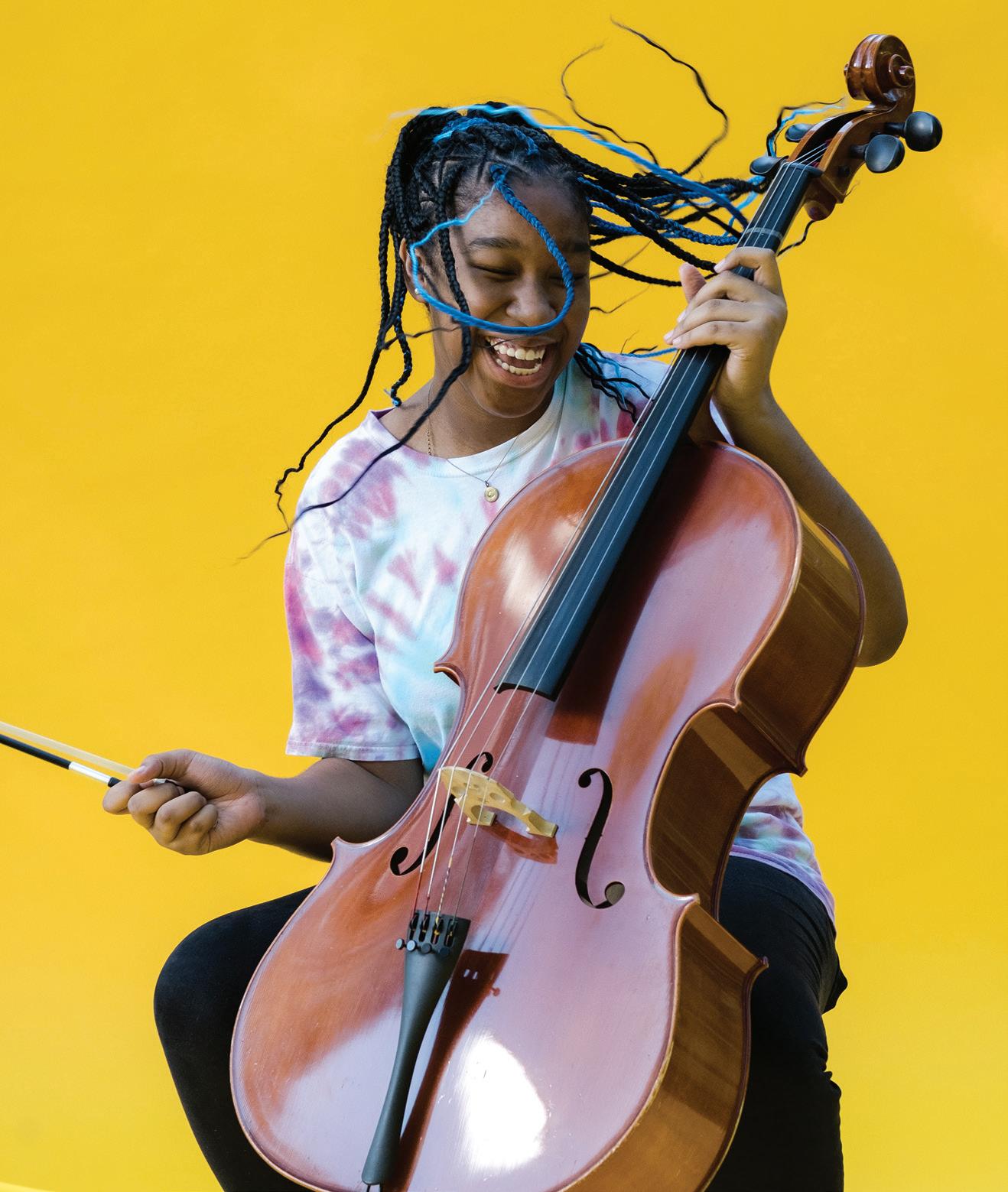
2 minute read
In Sync
‘In Sync’ Chapel Hill-Carrboro City Schools expands virtual music education offerings By Hannah Lee Photo by Cornell Watson amille Swann, a sophomore at Chapel Hill High School, has played the cello for almost five years now. She’s played hundreds of songs with dozens of classmates, not to mention countless hours of practice at home, since her first orchestra class in middle school. But she’s never performed quite like this. Chapel Hill-Carrboro City Schools (CHCCS) currently operates via virtual-only learning, and Camille’s orchestra class hasn’t met in person this year. There are no practice performances, no rehearsals or regular roundups of the class as a whole. No in-person opportunities for a teacher’s play along and receive instant evaluation while also recording music for Corrie to hear later. “It’s almost like karaoke for instruments,” she says. “It lights up when you play the notes, guides students through a music reading comprehension and allows them to also assess their own performance.” But there’s no telling when Camille will find herself on the stage again, playing alongside her peers. She misses feeling the vibrations of sound through her feet and the reverberations off the walls of her high school’s auditorium. Like most other students, she’s adjusting to her new classroom at home and taking advantage of the opportunity to connect with her friends for a few minutes at the beginning of class every Monday and Thursday during what Corrie calls a “gathering.” As a student who regularly asks questions, Camille says learning with SmartMusic has encouraged her, and C Whenever we do get to play [together], it’s absolutely advice. So, how does a student – even one with Camille’s amazing. students like her, to work independently. experience – learn an instrument from a distance? “When we were in orchestra, Ms. Franklin helped The answer: SmartMusic. It’s an online program that everyone,” Camille says. “But it’s hard to work with CHCCS sought out as a way to keep students engaged every individual at the same time. With SmartMusic, and on an upward trajectory. “Getting used to the you self-teach.” program has taken a little adjustment just because it’s another new thing,” No, there aren’t virtual-only performances on SmartMusic for Camille says Corrie Franklin, Camille’s orchestra teacher, “but I truly believe it’s the and her friends to take part in. There’s no replicating that aspect of best tool we have for remote learning right now.” orchestra class – dozens of students playing in unison. “I don’t think you On the surface, SmartMusic looks like so much else of our new normal: can ever fully replace the benefit of being in person,” Corrie says, “because sitting in front of a computer screen with a program pulled up, trying you learn so much from seeing and hearing people around you.” to simulate missing aspects of our lives. But there are key features to While it is not a perfect solution, SmartMusic offers the next best SmartMusic that make it a workable substitute, even without the benefits of alternative. And if there’s a way to recreate what Camille loves most, she’s in. human interaction. “Orchestra is a big family,” Camille says. “Everybody likes being able to It offers a database of ensemble music for a wide range of instruments. connect with one another, and whenever we do get to play [together], it’s Students can choose an instrument and piece of music and then listen, absolutely amazing. We’re really in sync.” CHM










